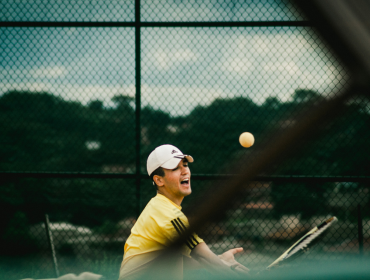Athletes rely heavily on their hands and wrists for performance. These areas are highly susceptible to injuries due to falls, impact, overuse, and repetitive stress. In this article we discuss the most common hand and wrist injuries among athletes.
Top Common Hand and Wrist Injuries Among Athletes
Whether from high-impact collisions, repetitive stress, or falls, these injuries can significantly impact performance and recovery time. Understanding the most common hand and wrist injuries can help athletes take preventative measures and seek appropriate treatment when necessary.
1. Sprains and Strains
Sprains occur when ligaments in the wrist or fingers are overstretched or torn, while strains affect the muscles and tendons.
These injuries often result from sudden impacts or awkward landings, such as in basketball, football, and gymnastics.
Symptoms include pain, swelling, and reduced mobility.
2. Fractures
Fractures in the hand or wrist are common in contact sports and activities with high fall risks, like skateboarding and cycling.
The most frequently broken bone in the wrist is the scaphoid, while metacarpal fractures (often called “boxer’s fractures”) affect the hand. Fractures can cause intense pain, swelling, bruising, and difficulty gripping objects.
3. Tendinitis
Repetitive motions, such as throwing a baseball or swinging a tennis racket, can lead to inflammation of the tendons in the wrist and hand.
Common conditions include de Quervain’s tenosynovitis, affecting the tendons on the thumb side of the wrist, and flexor or extensor tendinitis.
Symptoms include pain, tenderness, and difficulty with movement.
4. Carpal Tunnel Syndrome
Athletes engaging in repetitive wrist motions, such as cyclists, weightlifters, and tennis players, are at risk for carpal tunnel syndrome.
This condition occurs when the median nerve is compressed at the wrist, leading to numbness, tingling, and weakness in the hand.
5. Dislocations
A dislocation occurs when the bones in the hand or wrist are forced out of their normal position, often due to a direct impact or fall.
Finger dislocations are common in basketball and volleyball when an athlete attempts to catch or block a ball.
Wrist dislocations, though less common, can result from extreme force.
6. Ligament Tears (TFCC Injuries)
The triangular fibrocartilage complex (TFCC) is a structure in the wrist that helps stabilize movement. Injuries to the TFCC are common in sports requiring wrist rotation, such as golf, tennis, and gymnastics.
Symptoms include pain on the ulnar side of the wrist, clicking sensations, and weakness.
Prevention and Treatment
Preventing hand and wrist injuries involves proper warm-ups, strength training, and using protective gear such as wrist guards and tape.
If an injury occurs, rest, ice, compression, and elevation (RICE) are initial treatment steps.
While severe injuries may require medical intervention, including splinting, physical therapy, or surgery.
By understanding these common injuries, athletes can take proactive steps to protect their hands and wrists, ensuring long-term performance and health.

